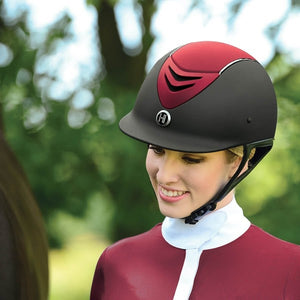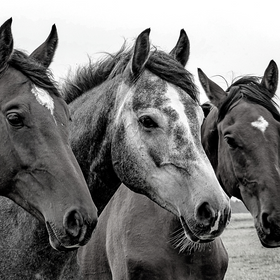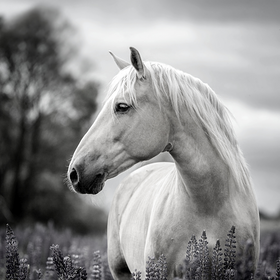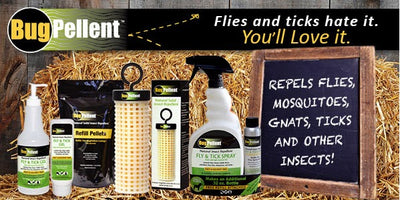
Bathing 101: 6 Steps to Bathing Your Horse
Whether your horse just found the biggest mud puddle in the pasture or you are getting ready for an event, it might be time to give your horse a bath. While it can seem like a lot of scrubbing when you look at your 1,000 pound muddy mess, if you take it step-by-step it can feel less daunting.
Step 1: Get Your Supplies
Before you get your horse, you’ll want to get all of your bathing supplies ready and in the right location. Setup your horse with an adjustable nozzle, a stepstool, and a few buckets in the bathing area. In one of the buckets, place all of your bathing equipment:
- Scrubbing glove or a fine curry comb
- Sponges
- Shampoo/Conditioner
- Sweat scraper
- Mane and Tail detangler
There are lots of different shampoos and conditioners on the market for horses. Unless your horse has skin issues or you are trying to enhance their coat color, most of the shampoo formulas will work for you. Shampoo is general can be drying for your horse’s coat, just like it is for human hair, so you want to make sure the soap isn’t sitting on their coat for too long.
Step 2: Washing
Before you start spraying your horse down, use a brush to remove as much dirt as you can from their coat. This will help the shampoo work better. Using an adjustable spray nozzle, set your hose to the “spray” setting to wet your horse all over. We recommend starting at their feet, working up onto the neck, avoiding the head, then working back towards the tail. Spray the mane and tail last and make sure they are thoroughly wet.
Shampoo time! There are two ways to apply shampoo, 1 - add a small amount of water and shampoo to a bucket, dip the sponge and use the sponge to wash your horse, or 2 - apply small amounts of shampoo to the wet sponge then apply to your horse. If you are new to washing horses, the first option usually prevents overusing the shampoo.
Later up the soap using circular motions on your horse’s coat, starting at their neck and moving towards their tail. Make sure to get their legs, bellies, and under their tails as you go. Once you have completed this process with the sponge, you can repeat it using the curry or scrubbing glove to help remove any leftover build-up.
Step 3: Manes & Tails
If you have a breed with a thick mane and tail (Friesians, Andalusians, Icelandics, etc.), this can be the most time consuming part of bathing. For tails, you can dunk the tail into a bucket of soapy water and scrub with your hands. For manes, add a small amount of shampoo to your hands and work into the hair. Make sure to scrub the roots well to remove build-up. If you are having trouble getting the soap to lather, you may need to add some water.
Wring out the water from the mane and tail and allow them to drip dry while you work on the rest of your horse. When most of the water stops dripping, you can add a conditioner (needs to be rinsed out) and/or a mane and tail detangler (is left in to condition and protect the hair).
Step 4: Rinsing
You want to make sure you do not leave any soap residue as this can be itchy and cause skin problems for your horse. Reduce the amount of time the soap is on your horse’s coat by soaping one side of the horse at a time, then rinse thoroughly with the hose. Using the same path you used to wet down your horse (front legs, neck, body), begin to rinse the shampoo.
Step 5: Washing Your Horse’s Head
Many horses do not enjoy having their heads washed. You never want to spray your horse’s head with a hose. Instead use a cloth or soapy sponge to wash their face gently. You can use the scrubbing glove to help remove extra dirt, then a clean sponge to rinse.
Step 6: Drying
Use a sweat scraper to remove excess water from your horse’s coat. Once the excess water is removed, you can use a cooler to help wick away excess moisture if the weather is not terribly warm. We would not suggest letting your horse out in the pasture until they are fully dry, unless you are ready to give them another bath!





